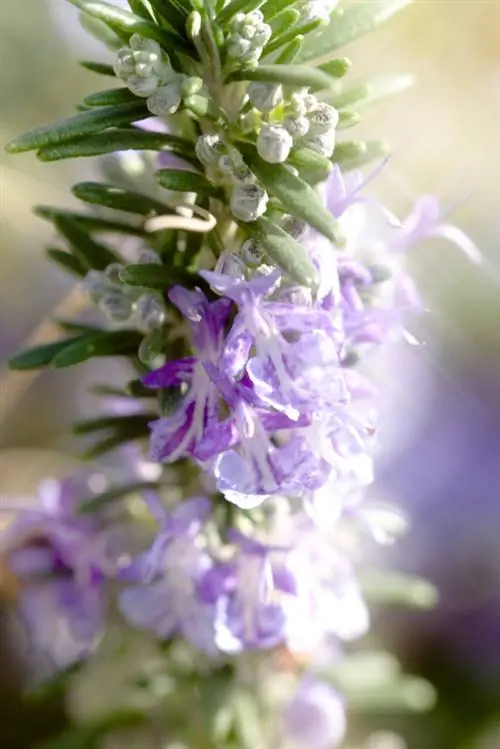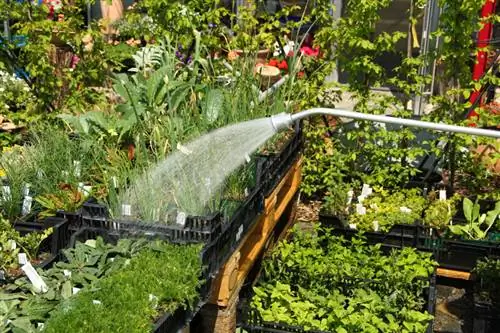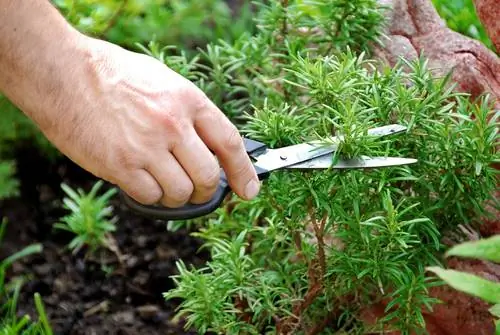- Author admin [email protected].
- Public 2023-12-16 16:46.
- Last modified 2025-01-23 11:20.
The vast, dry maquis of the Iberian Peninsula are the home of rosemary. There is little rain here, especially in summer, so that the subshrub has adapted optimally to the prevailing conditions over time. For this reason, rosemary needs very little water.

How often and with what should you water rosemary?
Rosemary requires little water. Planted rosemary only needs to be watered in hot, dry summer weather. Young plants and potted rosemary should be watered regularly when the top layer of substrate has dried. Avoid waterlogging and use calcareous tap water.
Watering rosemary in the garden
Thanks to its deep and branched roots, the plant is able to draw sufficient amounts of water and nutrients from the soil, even from several meters deep. For this reason, planted rosemary doesn't actually need to be watered unless the summer is very hot and dry. On hot summer days, you should water your rosemary - as soon as it sheds its needles, it's time for watering from the watering can.
Water young plants more often
However, the rule described above does not apply to cuttings or freshly planted rosemary bushes to this extent. These should be watered regularly but moderately. This makes it easier for the young plant to grow in the soil.
Water potted rosemary correctly
It looks a little different with rosemary planted in a pot - it needs to be watered regularly, otherwise it will die of thirst. The right time has come when the top substrate layer has dried thoroughly - you can easily check the level of dryness with your fingers. Water heavily, but avoid waterlogging. Excess moisture should be able to drain easily into a saucer, which is why the ideal pot for rosemary has drainage holes at the bottom. Alternatively, you can lift the entire plant out of the pot and immerse its root ball in a bucket of water. Then let it drain well. This method is good for saving dried out rosemary or providing it with enough water on very hot summer days.
Tips & Tricks
Unlike many other plants that are better watered with rainwater, rosemary needs lime. Therefore, water the shrub with calcareous (i.e. fresh) tap water to meet these needs.






